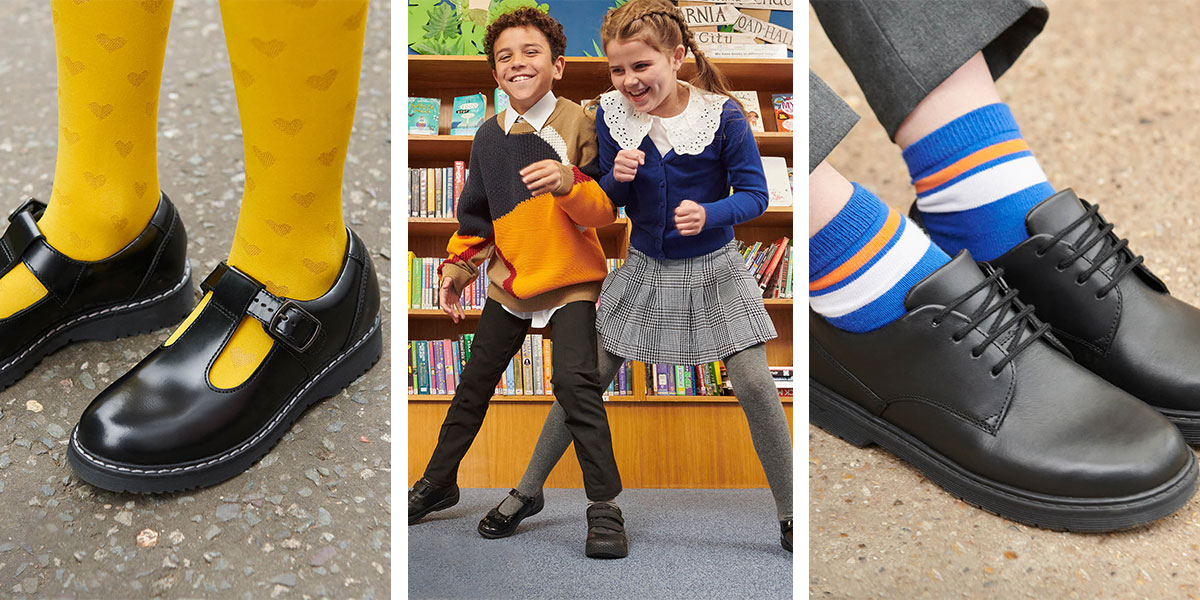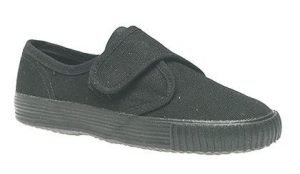Tips for Buying School Shoes – Back To School Guide
Buying kid’s school shoes can be a stressful experience, especially if it’s your first time. Considerations such as should you avoid the rush and buy early? What if they don’t fit? Should you wait till the week before school starts and do it then? Don’t panic though, our team of professional shoe fitters has shared some top tips for buying school shoes based on decades of experience.
Begg Shoes are one of Scotland’s longest-standing independent shoe retailers having been established in 1866. Six generations of the Begg family later, the business now boasts a team of footwear experts – many of whom are fully qualified from The Society of Shoe Fitters.
Should I get my Child’s Feet Fitted?
It’s a good idea to get your child’s feet professionally measured for their school shoes. Your child spends more time in their school shoes than any other shoes, often up to 30 hours per week. According to the Childrens Foot Health Register: 70% of foot health problems originate from wearing ill-fitting shoes and the majority of these issues are from shoes worn during childhood.
Consider the school dress code and which shoes your child will wear for the longest periods. Investing in quality and proper fitting shoes that are worn regularly is worth it, while shoes worn infrequently can be a chance to save time and money.
Children’s feet can grow two full sizes in a year, making it tempting to buy shoes that are slightly larger. However, we strongly advise against this for school shoes as they are worn for a significant portion of the time, increasing the risk of discomfort or harm.
How Important Are Quality School Shoes?
Quality school shoes are very important but it’s crucial to prioritise a proper fit, especially if they will be worn for extended periods. The most expensive shoes are not necessarily the best quality, and fashion trends often lack the essential features of an ideal school shoe. One of our most popular buying guide blogs is our guide to the Best Hardwearing School Shoes which has lots of tips on how to pick a longer lasting style at the end of the school holidays.
Our recommendation for school shoes is to opt for soft, lightweight, and flexible shoes which are made of breathable materials such as leather whenever possible. During winter, waterproof shoes are beneficial, especially for kids who walk to school.
Although cheaper shoes can fit well, it’s generally true that quality brands invest more time and resources in creating well-designed and constructed shoes. A good quality shoe with a smart design and secure fastening will provide a better fit for more children than shoes primarily designed for their style or made cheaply.
What Type of Fastening should school shoes have?
A crucial element of getting a good fit for your child’s shoes is choosing a secure fastening. It’s important to select a fastening that is appropriate for your child’s age to ensure they will use it correctly. If shoes are not fastened and secured properly, all the effort put into finding the right size will be undone.
Velcro strap shoes are an excellent choice for younger children as they are easy and quick to fasten. Higher quality brands usually position the fastenings correctly, which sets them apart from budget alternatives.
Buckle fastenings, often found in girls’ school shoes, are simple and elegant, making them a great option for younger and older children alike.
Laced shoes offer excellent adjustability but only once your child can tie their own shoelaces confidently. It’s best to avoid buying the latest trendy lace-up style if your child is unlikely to fasten them up properly, as teachers and assistants may not have time to do so.
Slip-on school shoes are generally not recommended because they lack a secure fastening.
when is best to Buy School Shoes?
It is a very common mistake to buy school shoes the day before children return to school and set them off (with sore feet) on the first day back. We recommend that you buy school shoes two to three weeks before school begins in order to give your child enough time to break them in. Children’s feet can grow rapidly so this strikes the best balance between holding off, while feet may grow a size, and ensuring they are happy with their new school shoes when term time starts.
Shoe shops can become very busy in the last 2-3 weeks before schools go back so we recommend booking an appointment where possible, or to visit the store the morning or late afternoon when its not too busy.
Should you Wear School Shoes In?
Yes, we recommend spending time wearing in all new children’s shoes. School shoes are often firmer and more structured than the trainers that most children wear through the summer and this can be a take a bit of getting used to. Let your child wear them for short periods at first to get used to them. Wearing their new school shoes for short periods will help to wear them in and also to grow accustomed to the feel of the shoes.
Blisters are unfortunately common with new school shoes but apart from wearing the shoes in, buying some good quality socks can also help. Socks with bulky seams that rest on toes are often the cause of blisters, or wearing old worn socks (which are much thinner than new ones) can compromise the fit of the shoe.
Are plimsolls good for your feet?
Plimsolls are fine for short-term wear, but they lack structure, support, and proper fastening in most cases, which is not ideal for healthy feet. Although there are lots of budget-friendly options, they often compromise quality and in some schools indoor shoes are worn for the majority of the school day and even indoor sports – which they are simply not designed for.
If your child’s school requires plimsolls or trainers for extended periods indoors, it’s essential to invest in high-quality indoor shoes that fit well and have a secure fastening. Slip-on plimsolls are not suitable for extended wear or indoor sports because they lack a secure fastening. If your school dress code permits it, black trainers are a better choice.
Another top tip for indoor school shoes is to make sure check their condition before every school holiday. It is very common for indoor shoes to stay at school (never coming home) and parents are often unaware that they have worn out completely, or are a size too small.
Tips for Buying School Shoes Online
If you are unable to visit one of our stores for a professional fitting and have opted to purchase school shoes online, here are our top tips:
- There should be around 12mm between the end of the shoe and the end of the longest toe.
- The widest part of the foot should correspond with the widest part of the shoe.
- The fastening should hold the heel firmly in the back of the shoe.
- The sole should not twist.
- The heel fit should be snug around the top line, with a shoe strong and stable structure.
- Avoid slip-on shoes and hand-me-downs as a worn shoe has shaped to the previous child’s foot.
Book a kids fitting appointment at Begg Shoes
We offer a professional kid’s fitting service in many of our stores across Scotland. These include locations in Elgin, Kirkwall, Lerwick, Peterhead, Perth, Inverurie and Inverness. Our team will provide practical and helpful advice to help make the right choice of footwear for your child and ensure they have healthy and happy feet. Our managers are certified by the Society of Shoe Fitters and Begg Shoes are proud members of Children’s Foot Health Register. Book a kids fitting appointment today using our online booking service.
Conclusion
And there we have it, our top tips for buying school shoes. All of those difficult questions you had to consider should now be slightly less scary and it’s time to buy. At Begg Shoes, we have an extensive collection of school shoes including bestselling brands Clarks, Lelli Kelly, Start Rite and more.





